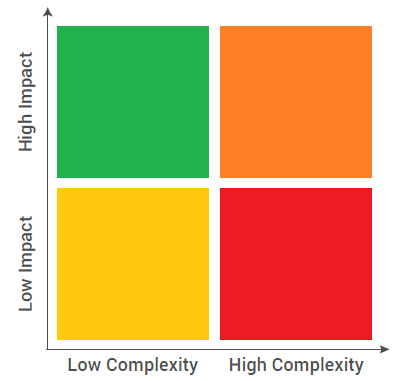Leaders among business are familiar with the phrase "It's all about balance." This includes balancing short-term versus long-term activities which can change approaches to spending money now versus the potential cost of spending money later.
With technical teams, a major balance is deriving requirements vs implementing features. It is very important to understand the needs of current customers versus trying to attract new ones. In most cases, the profit off a single customer is the same – so not having to pay for customer acquisition can make a statistically significant impact on the average revenue per customer (sometimes called ARPC) for current vs new customers. At the day-to-day level, a leader must balance the team working on technical solutions versus working with the businesses you support and understanding their needs. Sometimes this involves educating the client as to the mission and vision.
When managing a technical team, technical needs, desires and the requirements of managing a business may lead to different decisions. Understanding where to focus is important. Most technical teammates naturally focus on producing the best technological solutions, but as a manager, you must ensure they are also realistic and easily used/understood by your customer. Typically, when the team has evaluated a set of decisions, the selected objectives are added to the project roadmap. This roadmap helps with Enterprise Resource Planning (ERP) to determine where key aspects of a capability should be delivered. Ultimately, this roadmap should drive focus, but as the team collects more information from different perspective, the original weighting of priorities may change. Generally speaking, picking high-impact minimally complex projects will lead to the biggest gains. In other words, work top-left to bottom-right.

There is some debate regarding whether or not to address high complexity high impact items before low complexity low impact items – and the answer depends on the project and product lifecycle. In the early phases, it is expected that higher complexity items should be worked first. Close to a delivery, working highly complex items is not as favorable.
Where to focus can vary because technical team members often have a lot of knowledge about the systems and processes which influence their solutions to problems. A good technical manager knows to encourage and support creative problem-solving talent where applicable, but sometimes a member may propose solutions that focus too heavily on technical elements and make little business sense. Technical manager must make some decisions about whether realign this vision or allow the team member to continue to develop these ideas.
Here are some questions to ask before determining whether or not to realign an employee:
- Is this technical team member familiar with the technology used in the proposed solution?
- Is this team member familiar with the business value associated with the technical approach?
- Does the proposed solution fit with the overall system architecture?
- Does the proposed solution fit with the overall project, product and business direction?
- Will the solution integrate well into the current business process?
If the answer to these questions is unanimously yes, it makes sense to allow the teammate to continue and the team may work to incorporate this approach into the project roadmap. The manager will help implement a change management plan accordingly. If the answer to any of these questions is no, it only makes sense to implement the change if the current project roadmap will not lead to a desirable product or business outcome.
To realign a teammate, discuss your concerns clearly, kindly and objectively – and possibly phrase things from the perspective of the customer. Persuade him or her to look for another solution or at the current feasible solution. This helps prevent mismatches between your technical team's ideas, and what is logical for the customer. If the teammate continues to misalign, have the technical team get more involved with the business to understand the processes and requirements more thoroughly. With a strong alignment to the business, the team's technical solutions will improve in the long run.
In many cases, not focusing on technical solutions is the best way to create better technical solutions.
For a manager, communication style is important. Deliver the message effectively. Technical members often need to feel valued and supported. There have been may studies associating positive attitudes with quality products produced on time. Make sure the team is aware that business knowledge gives them the background that increases their importance to the business. This helps the business consistently benefit from the solutions produced by the technical team.
